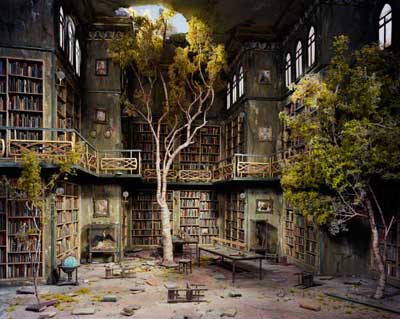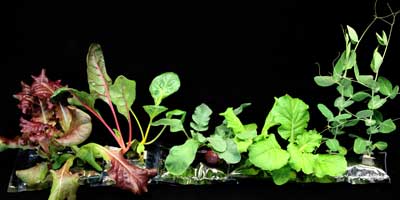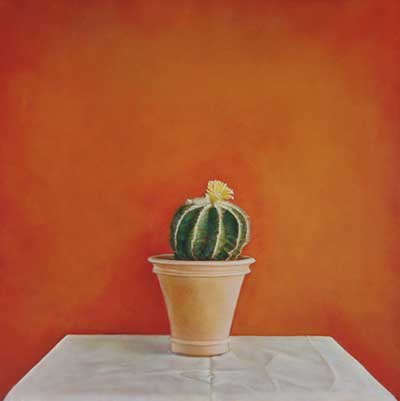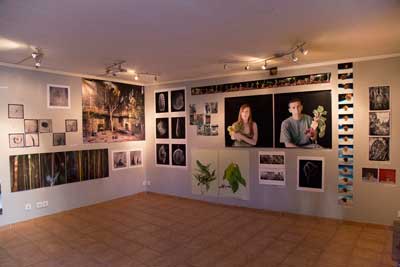 |
|
|
Rückblick Aktuelle Ausstellung Kontakt Impressum |
|
|
30 Years Galerie Lichtblick Space Veggies & Earth Plants #217.12.2016 - 19.2.2017
Anna Atkins, England (1799-1871) Scott Kelly, NASA, Houston, USA + Aus dem unglaublichen Reich der Pflanzen – von historischen zu futuristischen Interpretationen, kuratiert von Tina Schelhorn für MOMA Tbilisi, Georgia – Kolga Tbilisi Photo The incredible kingdom of plants - from historic to futuristic interpretations of 'Flora' curated by Tina Schelhorn for MOMA Tbilisi Georgia - Kolga Tbilisi Photo Öffnungszeiten/Opening hours::Fr 19-21 Uhr, Sa+So 14-18 Uhr
Space Veggies and Earth Plants Photographs of plants. Plants for their own sake. As an aesthetic or biological alternative to everyday life, society and civilization up to now. Plants as intelligent and resistant living organisms on the evolutionary path from earth to outer space. Art and amateur photography is cognisant of the motifs of man and beast, tree and flower in their paradisical simplicity. Journalistic documentation records the destruction of rain forests and biodiversity. Advertising revels in the values of recreation and consumption. Nature becomes the background setting, the fruit bowl and vegetable platter. Even in still life it is kept marginal, something between décor, color, fragrance, medicinal herb, drug, nourishment, prey and fuel. The future-trending research and documentation of the floral and the vegetal can be found at the interface between science, art and technology, the global and the interplanetary between ecology, climate change, terraforming and in an exodus to other celestial bodies. The terrestrial evolution seems to have gone through a gradual ascent, from algae and moss to the vascular plants with roots, sprouts and leaves, trees, shrubs, herbs to flowers. In the zero gravity of space, growth accelerates and reaches new dimensions. The pictures of nature, the subtext of the plants, change from a traditional life source to an object of economic exploitation and scarcity, to a test field of industrial standardization and to a gateway to unforeseen transformations. The aesthetic reflection of our home planet’s uniqueness is linked to our wonder at the fascinating ingenuity of evolution, here on earth and in outer space. Dr. Peter V. Brinkemper
Fotografien von Pflanzen. Pflanzen um ihrer selbst willen. Als ästhetischer oder biologischer Gegenentwurf zum bisherigen Alltag, zur Gesellschaft und Zivilisation. Pflanzen als intelligente und resistente Lebewesen auf dem evolutionären Pfad von der Erde ins All. Kunst- und Amateurfotografie kennen die Motive von Mensch und Tier, Baum und Blume in paradiesischer Einfalt. Die journalistische Dokumentation berichtet von Zerstörungen des Regenwaldes und der Artendiversität. Werbung schwelgt in Erholungs- und Konsumwerten. Natur wird zur Hintergrundkulisse, Fruchtmenü und Gemüseplatte. Selbst im Stillleben wird sie zur Marginalie, zwischen Dekor, Farbe, Duft, Heilkraut, Droge, Nahrungsmittel, Opfer und Brennstoff. Die zukunftsweisende Erforschung und Dokumentation des Floralen und Vegetabilischen findet an einer Schnittstelle statt, zwischen Science, Art und Technologie, global und interplanetar zwischen Ökologie, Klimawandel, Terraforming und im Exodus zu anderen Himmelkörpern. Die terrestrische Evolution scheint einen langsamen Aufstieg genommen zu haben, von Algen und Moosen zu den Gefäßpflanzen mit Wurzeln, Spross und Blättern, Bäumen, Sträuchern, Kräutern und Blütenträgern. In der Schwerelosigkeit des Alls wird Wachstum beschleunigt, Proportionen erlangen neue Dimensionen. Die Fotografen in dieser Ausstellung schlagen Schneisen und Brücken zwischen Zivilisation, Evolution und Natur. Künstlerische und alltägliche, strukturelle und dokumentarische, investigative und symbolisch-darstellende Verfahren dienen der fotografischen Erfassung und Darstellung des Lebendigen: zwischen möglicher Nutzung, genetischer Manipulation und reinem Wohlgefallen. Biologische Erscheinungen werden heute erzeugt durch natürliches Wachstum, virtuelle Konstruktion und gezielte Züchtung. Das Bild der Natur, die Botschaft der Pflanzen verändert sich vom traditionellen Lebensquell zum Objekt ökonomischer Ausbeutung und Verknappung, zum Testfeld industrieller Standardisierung und zur Pforte ungeahnter Transformationen. Die ästhetische Reflexion auf die Einmaligkeit unseres Heimatplaneten Erde verbindet sich mit dem Staunen über den faszinierenden Einfallsreichtum der Evolution, hier und im All. Dr. Peter V. Brinkemper
Vadim Gushchin, born 1963.Moscow, Russia. Fruits of the earth. 1998. The series provides a different staging compared to his former suprematist-like artworks. Fruits next to staged objects and the irony of directly undertaped German titles function as playful metaphorical accessories against simple identity: an artificial chicken and the egg, real, the pear, overripe, and a toy-mouse, bread and wine, with a wooden wine-cup, the apple, a wilted rose and the radish, a multiplicity, viewed from below. Between the units, there are broad links of shifting forms, materials, meanings and symbols, translations of art into life. Post-conceptual photography plays immanently with modern strategies and transform them into an open everyday experience. Azuma Makoto, born 1976, Japan, France, USA. Exobiotanica – Botanical Space Flight 2014. He is a flower sculpturist, producing massiv objects of solid expression with natural materials (mega bouquets, ice flowers) and public medial botanical installations. His art has commercial aspects but is also linked with space and environmental aspects. In July 2014 he sent with two ballons from Black Rock Desert in Nevada into the stratosphere, on a mission, entitled ‘Exobiotanica’, a 50 year old pine bonsai, suspended in a carbon-fiber cube-frame, and an arrangement of orchids, hydrangeas, lilies and irises, among other plants. Both helium ballons were specially equipped with high-resolution-cameras to document in 12.000 pics the steps of the plants into the unknown, drifting away from bright earth to dark sky nearly beyond atmosphere, entering a short time existence, unsheltered, without soil, air and gravity. |
|
Anna Atkins Space Veggies & Earth Plants #2 17.12. - 19.02.2017 Eröffnung: Party: Finnisage: Weitere Ausstellungen: Andrej Barov, München, Germany Azuma Makoto, Tokyo, Japan Space Veggies & Earth Plants #1 Birte Kaufmann The Travellers Dougie Wallace Simon Norfolk Kai L?ffelbein Thekla Ehlin Kolga Tbilisi Phto Meeting 2016 Anais Lopez Betsy Schneider Dona Schwartz Elaine Ling He Ladies Only #3 Imran Ahmed Arko Datto Shruti Desai Shubham Dharmsktu Ma The India Vision Quest Dieter Röseler Deutschland 5 Uhr 30 Wolfgang Zurborn Catch Brian Griffin Chris Suspect Richard Bram Oyvind Hjelmen Kolga Tbilisi Photo Meeting 2015 Linda Troeller Mariette Pathy Allen Mary Ann Lynch Regina Ladies Only #2 Aline Smithson Beatrix Reinhardt Joanna Black Karen Glase Ladies Only #1 |
| © 2025 Galerie Lichtblick, Gesellschaft für fotografische Kunst e.V. Köln | Impressum |



